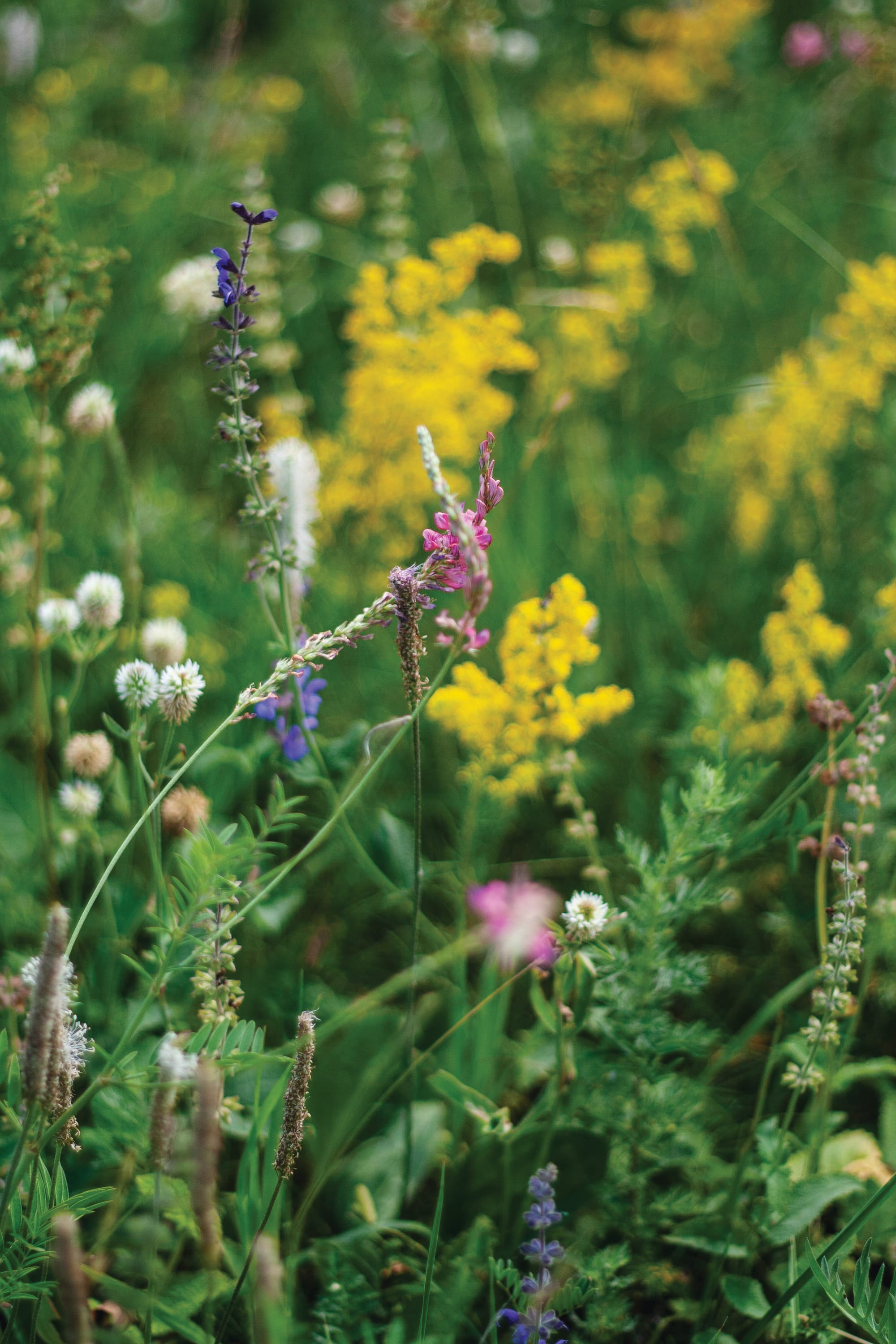From less mowing to attracting pollinators, there are plenty of reasons to consider them
By Lydia Major and Nikki Schlepp
The benefits of turf alternatives have been debated for years. Members of city councils, the parks commission, or perhaps even community members have touted the benefits: fescues that need only occasional mowing, saving staff time and reducing fossil-fuel consumption; clovers that attract bees and other pollinators that are essential to maintaining the planet’s health; or native wildflowers that require little irrigation but add blooms and beauty to park landscapes. What’s not to like about those options, right?
But, unfortunately, it’s not that simple. Plenty of hard questions need to be answered. For starters, how much does it cost to install these magical groundcovers? And what do they require to be maintained? And didn’t the neighboring municipality put in an alternative lawn, and it looked like a mud pit for the first year (and a scruffy patch of weeds after that)? How do you get the public to tolerate or learn to love this type of landscape?
Turf alternatives aren’t right for every situation, of course, but it’s worth weighing the pros and cons. Some people have found a short-term investment can result in long-term savings. And with many parks managers looking to do more with fewer resources, replacing traditional lawns with low-maintenance options may reduce chronic job stress caused by tight budgets, labor shortages, and lack of time.
The Big Picture
Change always requires work—and installing a turf alternative presents both challenges and opportunities.
Challenges:
- Budgeting for installation: Costs can vary widely by vendor, and there may be a limited number of qualified contractors who can (or should) install turf alternatives. Be prepared to weigh the upfront costs against future savings.
- Training staff: Non-traditional groundcovers don’t require constant mowing, but they do require some care. Staff members will have to be trained in what to do—and what to avoid—as the new plants take root.
- Seeding and establishing: In some cases, getting clover, fescue, or another alternative started can be a real challenge. It will take a few seasons before things look healthy and hardy.
- Educating the public: Initially, the public may view the new plantings as weeds. To avoid nasty comments, generate publicity, conduct outreach, or post signs that explain the goals of the efforts—and the future benefits!
Opportunities:
- Lessening long-term costs: Lower maintenance means less staff time, and fewer resources are involved in upkeep. Dollars are conserved.
- Enhancing natural habitat: Bees, pollinators, and other creatures benefit from the flowers, shade, and seeds produced by native prairie and woodland ground covers.
- Reducing pollutants: Less fertilizer is required for non-traditional groundcovers, which means less runoff in lakes and rivers.
- Beautifying the landscape: Different types of plants add unexpected textures and colors to parklands.

Site-Specific Opportunities
If opportunities seem attractive and challenges seem surmountable, consider installing a turf alternative:
- Salt-tolerant turf
- Mowed low-input lawn
- Low-mow lawn
- Bee lawn/clover mix
- Native prairie mix
- Shady woodland mix.
Which is the right selection? The answer depends on several factors:
Irrigation Needs
Drought can interfere with the establishment of plants. Some form of irrigation will be needed—definitely at the beginning and possibly on an ongoing basis. That said, Kentucky bluegrass needs ongoing irrigation, while alternatives do much better in drought conditions once they are established. (Just be sure to water for at least three full seasons to help the good plants outperform the weeds.)
Site Slope
The steeper the slopes on a site, the more likely there will be some erosion. Hardy fescues, sedges, and tall grasses can help prevent degradation of the site. And since these plants don’t require mowing, the upkeep of slopes planted with these mixes is less-dangerous to staff members (i.e., there’s no need to steer a riding mower at a 20-degree tilt).
Foot Traffic
If a site endures a lot of foot traffic, select a turf alternative that can take a beating. Do kids play in the area? Do hikers clomp through the site? What is the overall level of compaction? Some plants are more tolerant than others. Fine fescue doesn’t hold up as well as bee lawn clover, for example.
Salt
Salt kills everything—including turf alternatives. So, if a large amount of salt is used on a site to melt winter snow and ice, consider adding an 18- to 24-inch buffer of salt-tolerant sod along streets and sidewalks. Salt-tolerant sod has a better chance of surviving after a salt-heavy winter. Flushing the landscape with water in the spring can also help reduce salt in the soil.
Shade And Sunshine
If a site is drenched in sun from dawn till dusk, select any of the turf alternatives—except perhaps blends that are mostly fescue. If the site is heavily shaded, make a selection accordingly.
Staff Education
With turf alternatives, mowing can be reduced or even eliminated. But maintenance is still required, and staff members must be trained to care for the site properly. This may involve plant identification that helps staff spot-weed or to learn how to treat various areas of sites based on plant composition.
Habitat Needs
Lastly, the choice will be informed by overall goals. If priorities include attracting bees, birds, and other critters to a site, then choose a mix with lots of diversity. The various flowers and seeds will attract different species, and the mix of shade, sun, and woody and herbaceous plants will affect the kinds of wildlife that choose to make a site their home.
No single solution is right for every park, but managers who mull over the key considerations are most likely to succeed with turf alternatives. Still not sure how to proceed? Find the answers on the Turf Alternative Choices Flow Chart to narrow the choices and find a solution that fits with the environment. Good luck! And have fun not mowing!
Lydia Major, ASLA, and Nikki Schlepp are members of the Landscape Architecture and Planning Studio at LHB Inc., an architecture, engineering and planning firm based in Minnesota and Wisconsin. Reach them at Lydia.major@lhbcorp.com and Nikki.schlepp@lhbcorp.com. Learn more about the landscape studio and projects at LHBcorp.com.

